Article category
- Page Path
-
- HOME
- ARTICLE CATEGORY
- Article category
- Original Article
- Cardiology
- Echocardiographic reference z scores of right ventricular dimension and systolic function of children aged 5–12 years
- Alaba Busola Oladimeji, Moriam Omolola Lamina, Peter Odion Ubuane, Motunrayo Oluwabukola Adekunle, Omolara Adeolu Kehinde, Barakat Adeola Animasahun, Olisamedua FidelisNjokanma
- Clin Exp Pediatr. 2023;66(5):215-222. Published online April 18, 2023
-

Question: Z score reference values for right ventricular size and systolic function in children using echocardiography are available in several countries. Despite the high burden of diseases involving the right ventricle in Nigeria, these reference values have limited applicability.
Finding: The right ventricular sizes of Nigerian children differed from those published elsewhere.
Meaning: These reference values will aid the treatment, monitoring, and pre- and postintervention for Nigerian children.
- Editorial
- Infection
- Impact and role of vitamins as immunonutrition in children during COVID-19 pandemic
- Yoo Min Lee
- Clin Exp Pediatr. 2023;66(5):212-214. Published online April 18, 2023
-

· Vitamins have effector mechanisms in the innate and adaptive immune systems and potential roles in preventing and reducing the severity of coronavirus disease 2019 (COVID-19).
· Vitamins may be immunonutrients in the treatment of COVID-19 infections and prevention of patient deterioration due to critical illness, thus demonstrating the significance of a nutritious, well-balanced diet.
- Neurology
- Understanding the usefulness of electroencephalography source localization
- Bo Lyun Lee
- Clin Exp Pediatr. 2023;66(5):210-211. Published online April 18, 2023
-
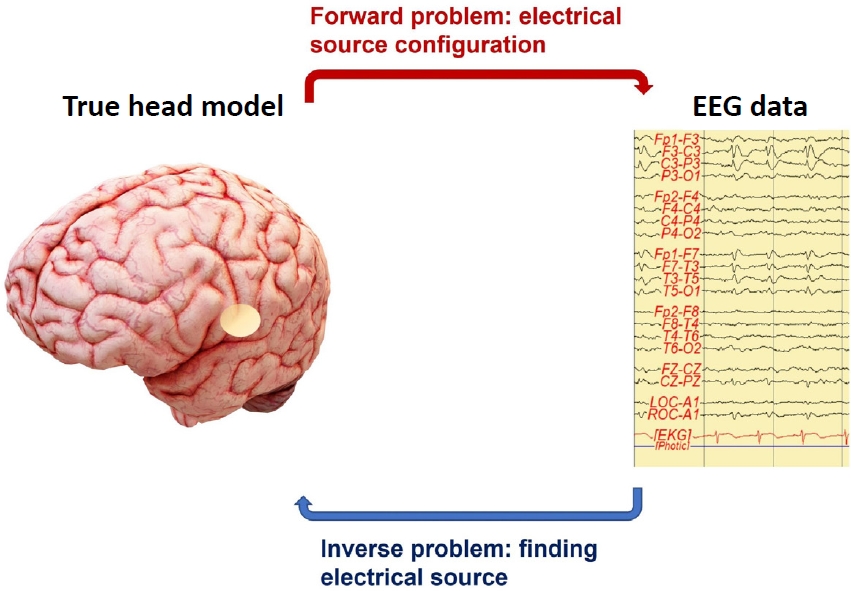
· Electroencephalography (EEG) records brain activity with high temporal resolution.
· EEG source localization, combined with other functional or structural imaging methods, provides information about brain network and connectivity in clinical neuroscience.
· EEG source localization identifies brain location from electrical current sources in several neuropsychiatric diseases such as epilepsy, attention deficit/hyperactivity disorder, and anxiety disorders.
- Review Article
- Neurology
- Electroencephalography source localization
- Tae-Hoon Eom
- Clin Exp Pediatr. 2023;66(5):201-209. Published online December 29, 2022
-
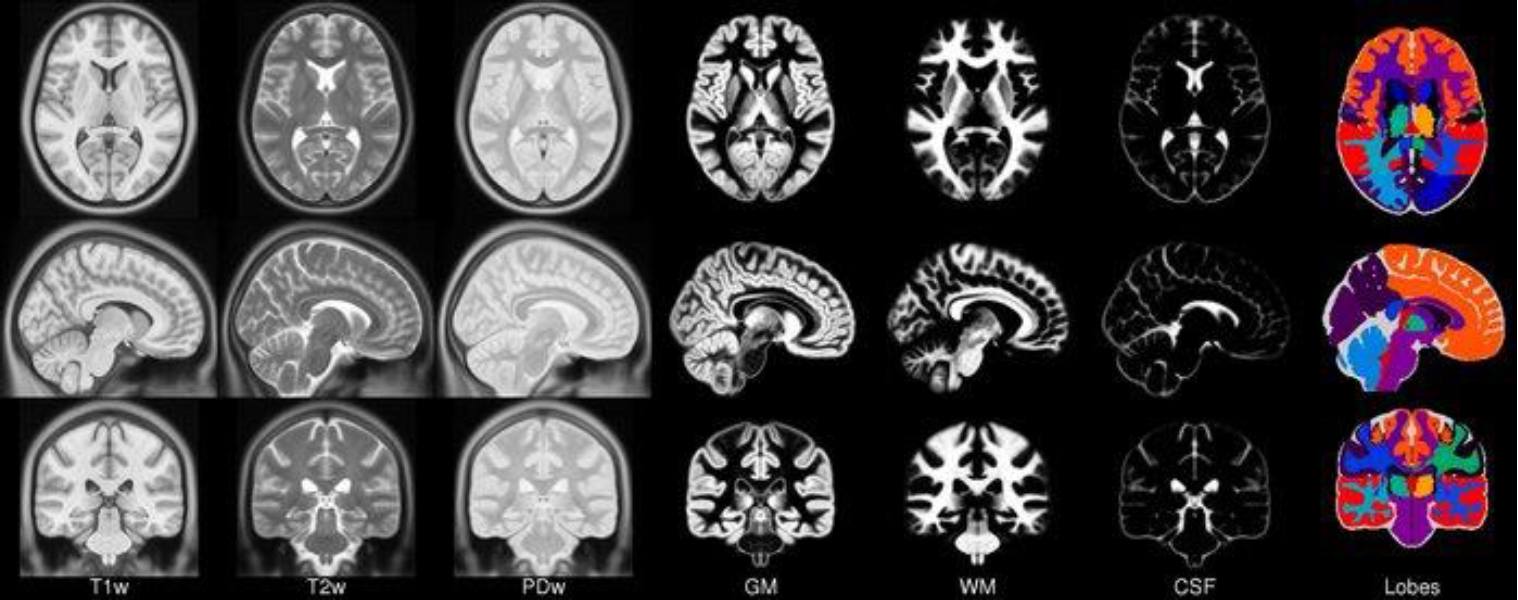
· Electroencephalography (EEG) directly images the electrical activity of neurons at a higher temporal resolution than other neuroimaging techniques.
· EEG is still widely used in brain function research due to its advantages.
· Forward and inverse problems of EEG analyses require solutions.
· Methods such as the dipole and distributed source models have been introduced.
· Applications of EEG are expanding with the integration of other technologies and large-scale data.
- Cardiology
- Arrhythmia and COVID-19 in children
- Mi Kyoung Song, Bryan Kwon
- Clin Exp Pediatr. 2023;66(5):190-200. Published online April 18, 2023
-
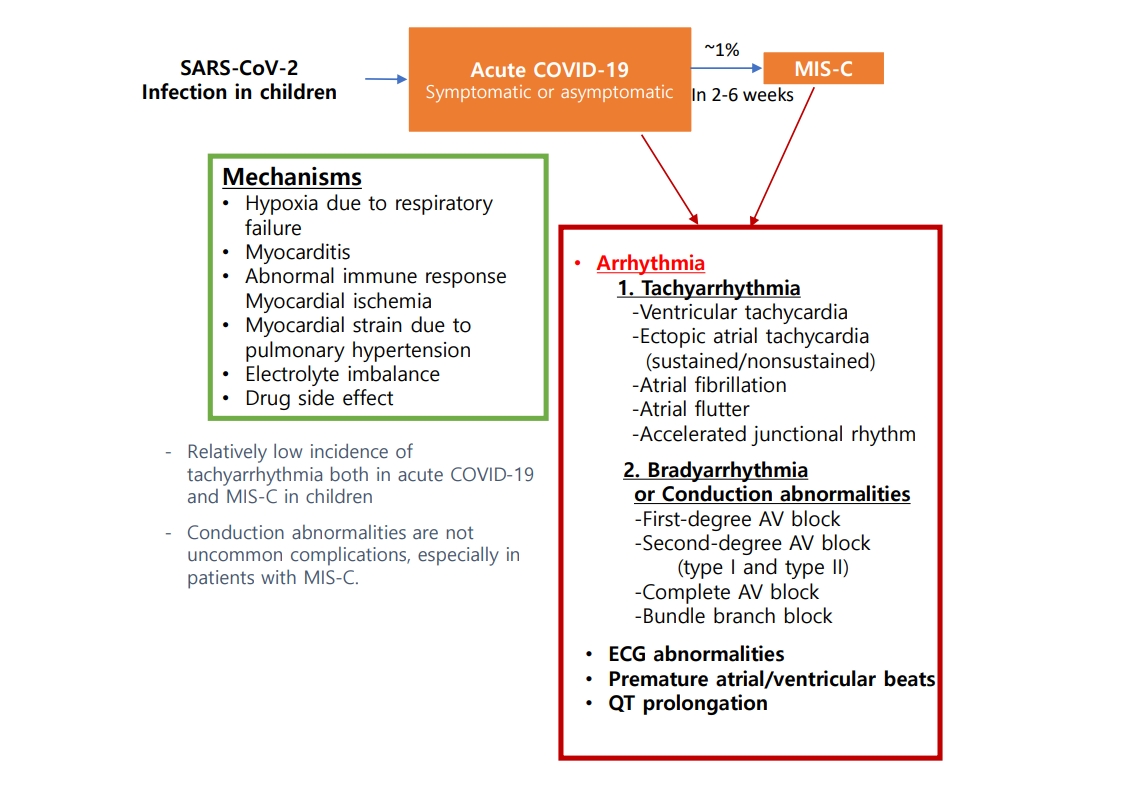
· Pediatric patients have a relatively low incidence of tachyarrhythmia both in acute coronavirus disease 2019 and multisystem inflammatory syndrome in children (MIS-C), but it was associated with an increased risk of poor outcomes.
· Conduction abnormalities were not uncommon, especially in those with MIS-C. Most patients recovered to normal sinus rhythm; however, some progressed to advanced atrioventricular block and rarely required permanent pacemaker implantation.
- Infection
- COVID-19 in immunocompromised children and adolescents
- Byung Ok Kwak, Byung Wook Eun
- Clin Exp Pediatr. 2023;66(5):182-189. Published online April 18, 2023
-

Most immunocompromised children and adolescents are not at increased risk of developing severe coronavirus disease 2019 (COVID-19). COVID-19 outcomes for low- or medium-risk immunocompromised children are favorable, while more serious illness reportedly occurs in high-risk immunocompromised children by underlying disease, its treatments, and other factors. Therefore, the early detection and timely management of severe COVID-19 and treatment of underlying disease are important. Hospitalization and COVID-19 vaccination should be carefully considered.
- Perspective
- Other
- New public-centered child protection system in Korea
- We Sun Shim
- Clin Exp Pediatr. 2023;66(5):179-181. Published online April 18, 2023
-
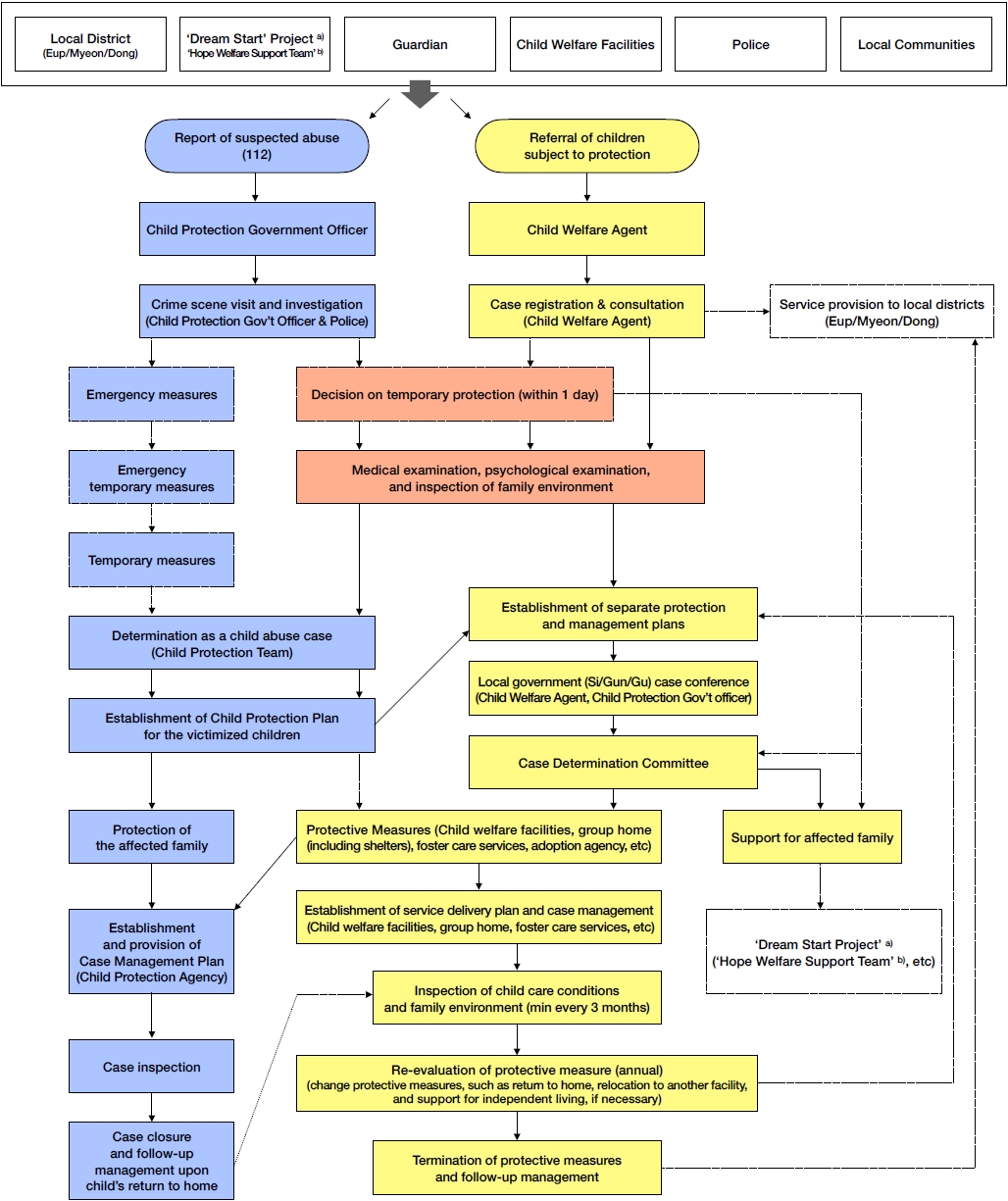
Korea’s child abuse response system was transformed under policy change in April 2020, from what was previously operated on a private-centered basis to a focus on the public sector with expanded role of local governments. Promising outcomes are expected with new system as greater governmental intervention will effectively protect at-risk children with acceleration in institutional collaboration and expertise in information management and administration.
- Original Article
- Infection
- Predicting COVID-19 transmission in a student population in Seoul, South Korea, 2020–2021
- Young Hwa Lee, Han Ho Kim, Young June Choe
- Clin Exp Pediatr. 2023;66(4):173-178. Published online December 22, 2022
-
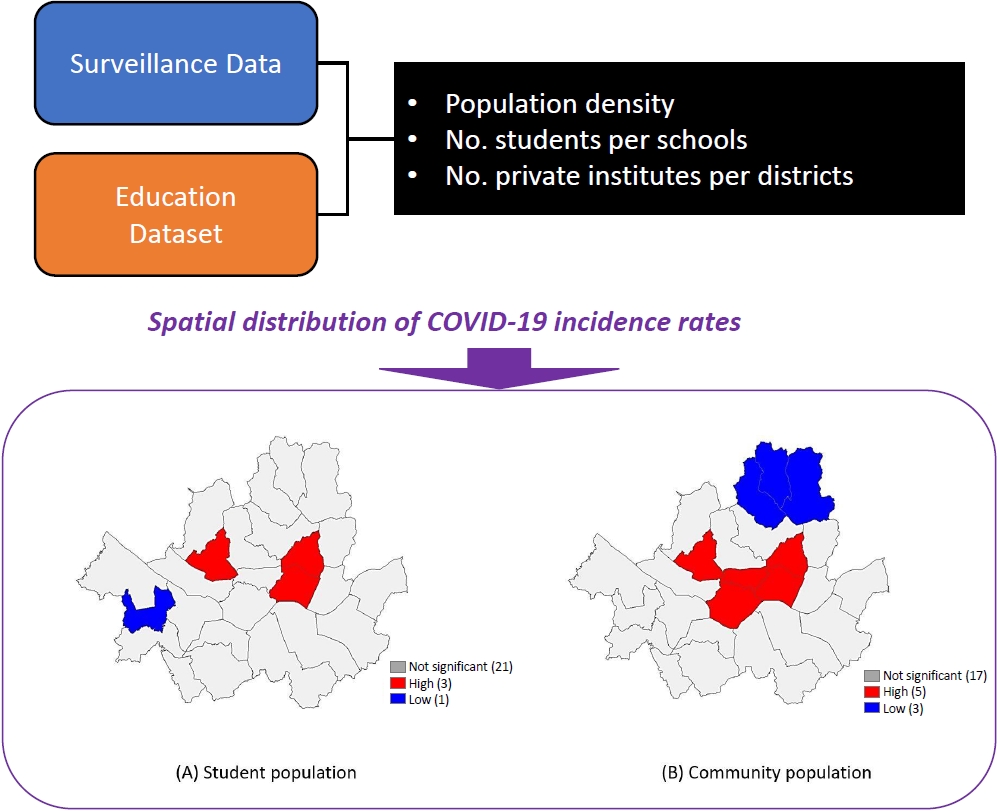
Question: What is the spatial distribution and determinants of coronavirus disease 2019 (COVID-19) infection among students in Korea?
Finding: The community population was closely associated with the risk of COVID-19, and the number of students per school class were inversely associated with COVID-19 rates in students.
Meaning: Our finding suggests that controlling the community-level burden of COVID-19 can help prevent sudden acute respiratory syndrome coronavirus 2 infection in school-aged children.
- Editorial
- Other
- Advancing pediatric health: the multifaceted scope of Clinical and Experimental Pediatrics
- Jin Hee Oh, Man Yong Han
- Clin Exp Pediatr. 2023;66(4):171-172. Published online March 29, 2023
-
Clinical and Experimental Pediatrics (CEP) is a journal that specializes in pediatric research topics. It covers a wide range of research areas, including basic research, translational research, and research related to improving pediatric health and diseases. CEP also focuses on the coordination of societal structures and processes that orchestrate pediatric health and disease throughout society, and the parallel relationship between regional characteristics and globalization. The journal intends to continue promoting pediatric health through relentless efforts and the discovery of new research areas.
- Gastroenterology
- Is there a link between social media usage and functional gastrointestinal disorders in children?
- Hae Jeong Lee
- Clin Exp Pediatr. 2023;66(4):169-170. Published online March 23, 2023
-
Social media use has potential benefits and risks, including links to adverse health problems in children such as functional gastrointestinal disorders (FGIDs). Screen time control, emotional support, and parental guidance can help children navigate social media safely and reduce the risk of developing FGIDs.
- Review Article
- Allergy
- New approaches to immunotherapy in house dust mite allergy
- In Sik Kim
- Clin Exp Pediatr. 2023;66(4):161-168. Published online October 25, 2022
-
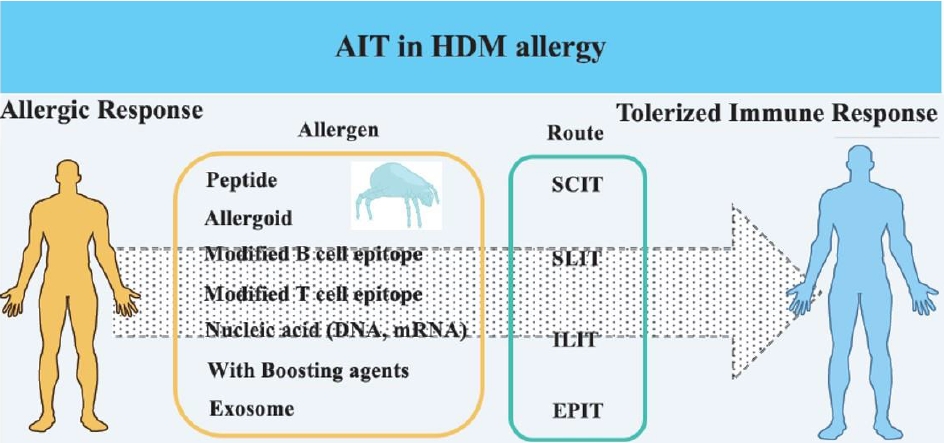
Allergen immunotherapy (AIT) has developed over the last few decades and has emerged as a promising treatment. House dust mite (HDM) is a target allergen in AIT, and various modified HDM allergens have been improved for their efficacy. Moreover, clinical trials have proved their significantly therapeutic effects in allergy. This article review focuses on HDM allergens developed for AIT efficacy,...
- Gastroenterology
- High-resolution esophageal manometry in children
- Yogesh Waikar
- Clin Exp Pediatr. 2023;66(4):155-160. Published online October 17, 2022
-

High-resolution esophageal manometry can be safely performed in children where recurrent vomiting and persistent dysphagia is the working diagnosis after excluding nonluminal and structural obstructive pathologies using pediatric upper gastrointestinal endoscopy. Normal manometry values are available. Clinical picture, biochemical tests, radiological interpretation, and endoscopic findings with manometry completes the analysis of patients with recurrent vomiting and dysphagia.
- Nutrition
- Association of gut microbiota with obesity in children and adolescents
- Ky Young Cho
- Clin Exp Pediatr. 2023;66(4):148-154. Published online November 16, 2022
-

The gut microbiota is an emerging factor in the development of pediatric obesity, which is affected by renowned risk factors such as diet, lifestyle, and socioeconomic status. This review aimed to describe the association between the gut microbiota and childhood obesity.
- Letter to the Editor
- Endocrinology
- Accuracy of predicted adult height using the Greulich-Pyle method and artificial intelligence medical device
- Dongho Cho, Yun Sun Choi, Hayun Oh, Young min Ahn, Ji-Young Seo
- Clin Exp Pediatr. 2023;66(3):145-147. Published online January 25, 2023
-
- Clinical Note
- Genetics and Metabolism
- Biallelic POLR3A variants cause Wiedemann-Rautenstrauch syndrome with atypical brain involvement
- Byungseung Moon, Minhye Kim, Hye Jin Kim, Jae So Cho, Hey Joon Son, Byung Chan Lim, Ki Joong Kim, Jong Hee Chae, Soo Yeon Kim
- Clin Exp Pediatr. 2023;66(3):142-144. Published online December 30, 2022
-
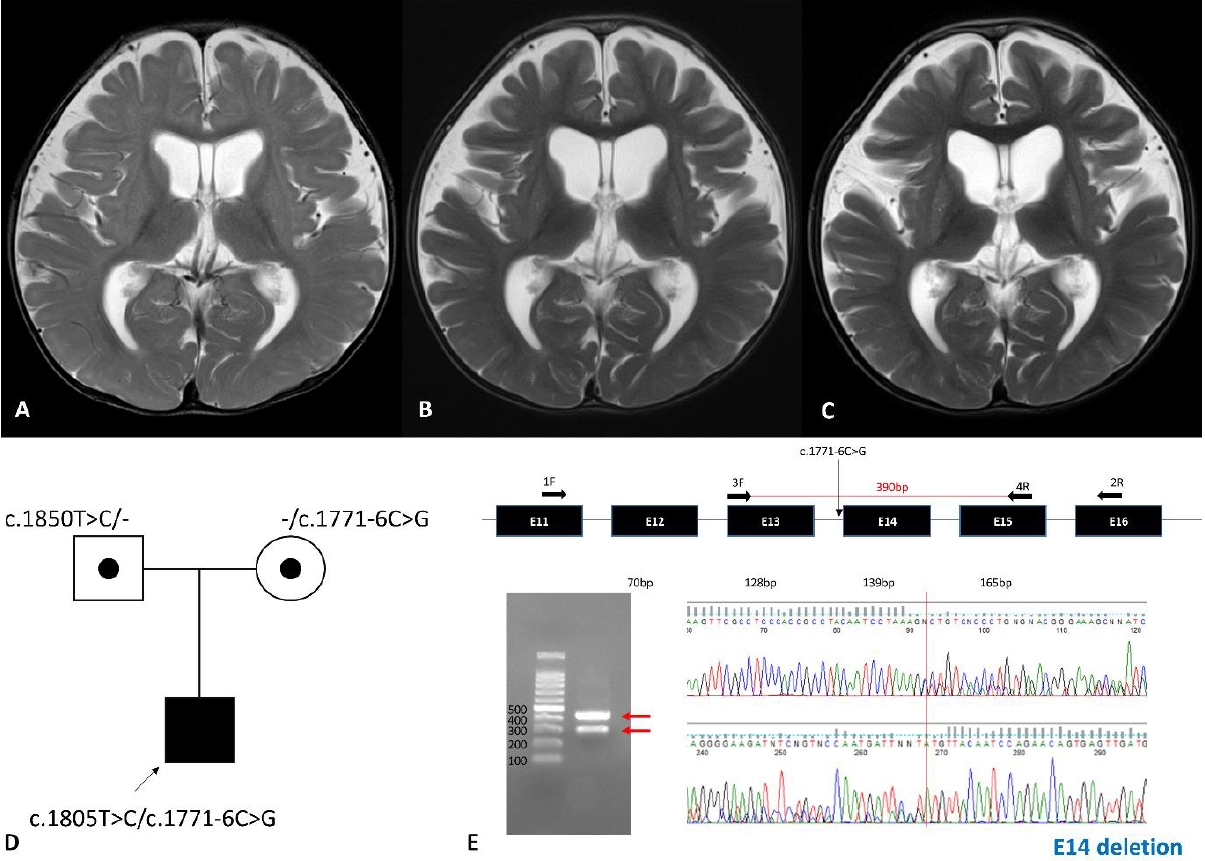
- Original Article
- Infection
- Clinical characteristics of pediatric patients infected with SARS-CoV-2 versus common human coronaviruses: a national multicenter study
- In Suk Sol, Eun Lee, Hyeon-Jong Yang, Yong Ju Lee, Hye Yung Yum, Mi-Hee Lee, Mi Ae Chu, Hui Jeong Moon, Hyo-Bin Kim, Ju Hee Seo, Jung Yeon Shim, Ji Young Ahn, Yoon Young Jang, Hai Lee Chung, Eun Hee Chung, Kyunghoon Kim, Bong-Seong Kim, Cheol Hong Kim, Yang Park, Meeyong Shin, Kyung Suk Lee, Man Yong Han, Soo-Jong Hong, Eun Kyeong Kang, Chang Keun Kim; on behalf of The Pneumonia & Respiratory Disease Study Group of Korean Academy of Pediatric Allergy and Respiratory Disease
- Clin Exp Pediatr. 2023;66(3):134-141. Published online December 22, 2022
-

Question: The clinical differences between severe acute respiratory syndrome coronavirus-2 (SARS-CoV-2) and human coronaviruses (HCoV) in children remain unknown.
Finding: This study compared the clinical findings of children infected with SARS-CoV-2 versus HCoV. Its findings suggest that children and adolescents with SARS-CoV-2 have a milder clinical course than those with HCoV.
Meaning: The clinical course of children and adolescents with SARS-CoV-2 should be closely monitored during the coronavirus disease 2019 pandemic.
- Hematology
- Changes and correlations of T-cell coinhibitory molecule programmed death-1 and interferon-γ in pediatric immune thrombocytopenia
- Fady Mohamed El-Gendy, Amira M.F. Shehata, Esam Awad Abd El-Kawy, Mahmoud Ahmed El-Hawy
- Clin Exp Pediatr. 2023;66(3):127-133. Published online February 24, 2023
-

Question: What are the PD-1+ CD4+ T cells percentages and serum interferon gamma (IFN-γ) levels of pediatric patients with immune thrombocytopenia (ITP)?
Finding: Compared with healthy controls, the PD-1+ CD4+ T cells percentages and IFN-γ levels were significantly higher in ITP patients before and 1 month after therapy.
Meaning: Our findings suggest that PD-1+ CD4+ T cells and IFN-γ are involved in the pathophysiological process of ITP.
- Editorial
- Nephrology (Genitourinary)
- Optimal hemodialysis treatment for pediatric kidney failure patients
- Yo Han Ahn
- Clin Exp Pediatr. 2023;66(3):125-126. Published online February 15, 2023
-
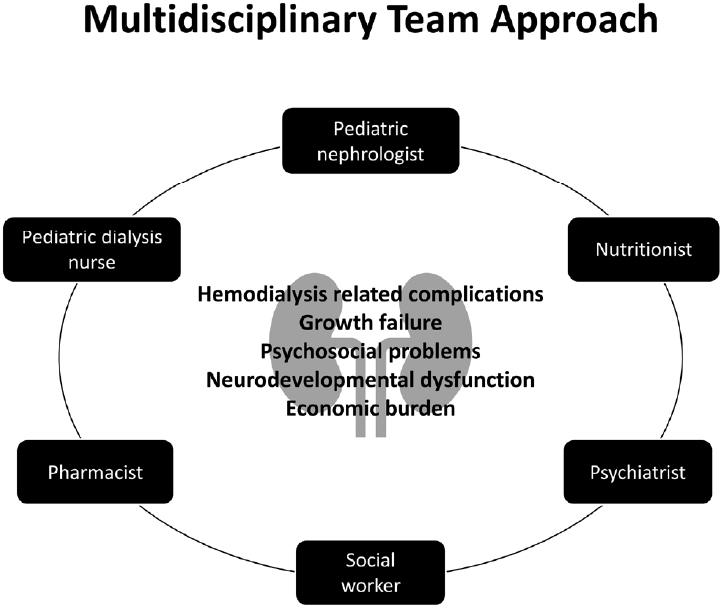
· Although the basic concept of hemodialysis (HD) is similar in adults and children, specific factors must be considered in the latter, including the small dialyzer and circuit, difficult vascular access, and frequent complications.
· HD-associated complications include catheter-related problems, hemodynamic instability, and neurodevelopmental and cognitive dysfunction.
· Pediatric HD is challenging, and steady efforts are needed to perform it safely and reduce its complications, thereby improving clinical outcomes.
- Review Article
- Gastroenterology
- Liver fibrosis in children: a comprehensive review of mechanisms, diagnosis, and therapy
- Elif Ozdogan, Cigdem Arikan
- Clin Exp Pediatr. 2023;66(3):110-124. Published online December 19, 2022
-
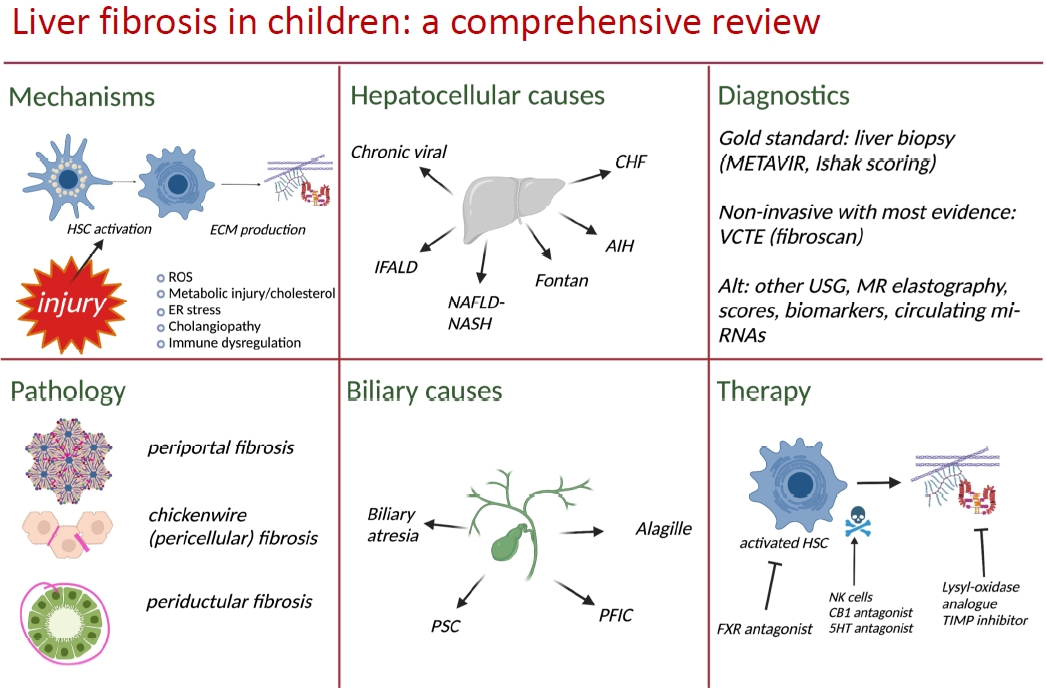
· Chronic liver diseases in children are heterogenous but converge in the common pathway of fibrosis.
· Much of the literature on mechanisms of fibrogenesis focus on adults but pediatric physiology has documented differences.
· Understanding of these distinctions are necessary to define, treat, and prevent fibrosis.
· Current management of liver fibrosis relies heavily on liver biopsy. Multiple tools have shown high diagnostic performance in pediatric and adult populations. Large, multicenter studies are needed for validation.
- Critical Care Medicine
- Ferritin in pediatric critical illness: a scoping review
- Ivy Cerelia Valerie, Anak Agung Sagung Mirah Prabandari, Dyah Kanya Wati
- Clin Exp Pediatr. 2023;66(3):98-109. Published online September 16, 2022
-

The number of studies on ferritin predictive ability in pediatric critical illness has grown exponentially over the past 2 decades. However, among the 66 of 1,580 studies analyzed here, summary statistics for overall and condition-specific studies were only reported in 45.4% and 71.2%, respectively. In contrast, ferritin as a categorical variable with a preset threshold was a significant predictor in 84.6% of studies.
- Neurology
- Pediatric syncope: pearls and pitfalls in history taking
- Jung Sook Yeom, Hyang-Ok Woo
- Clin Exp Pediatr. 2023;66(3):88-97. Published online February 15, 2023
-
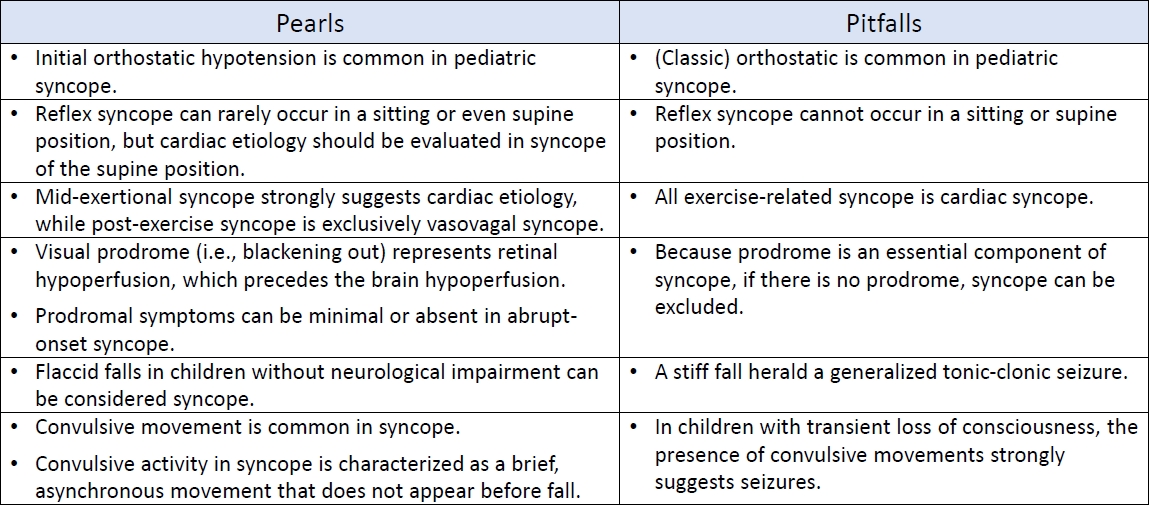
An accurate diagnosis depends on correct history taking and its interpretation. An in-depth understanding of the symptoms of syncope in connection with its pathophysiology can lead to avoiding critical pitfalls in the diagnostic process of history taking.
- Letter to the Editor
- Critical Care Medicine
- Role of serum bilirubin-to-albumin ratio as a prognostic index in critically ill children
- You Min Kang, Ga Eun Kim, Mireu Park, Jong Deok Kim, Min Jung Kim, Yoon Hee Kim, Kyung Won Kim, Myung Hyun Son, Soo Yeon Kim
- Clin Exp Pediatr. 2023;66(2):85-87. Published online December 5, 2022
-
- Clinical Note
- Rheumatology
- Haploinsufficiency A20 misdiagnosed as PFAPA (periodic fever, aphthous stomatitis, pharyngitis, and cervical adenitis) syndrome with Kikuchi disease
- Kyo Jin Jo, Su Eun Park, Chong Kun Cheon, Seung Hwan Oh, Seong Heon Kim
- Clin Exp Pediatr. 2023;66(2):82-84. Published online June 22, 2022
-

- Original Article
- Gastroenterology
- Association between maternal weight gain during pregnancy and child’s body mass index at preschool age
- Jeewon Shin, Yoowon Kwon, Ju Hee Kim, Su Jin Jeong
- Clin Exp Pediatr. 2023;66(2):76-81. Published online November 30, 2022
-
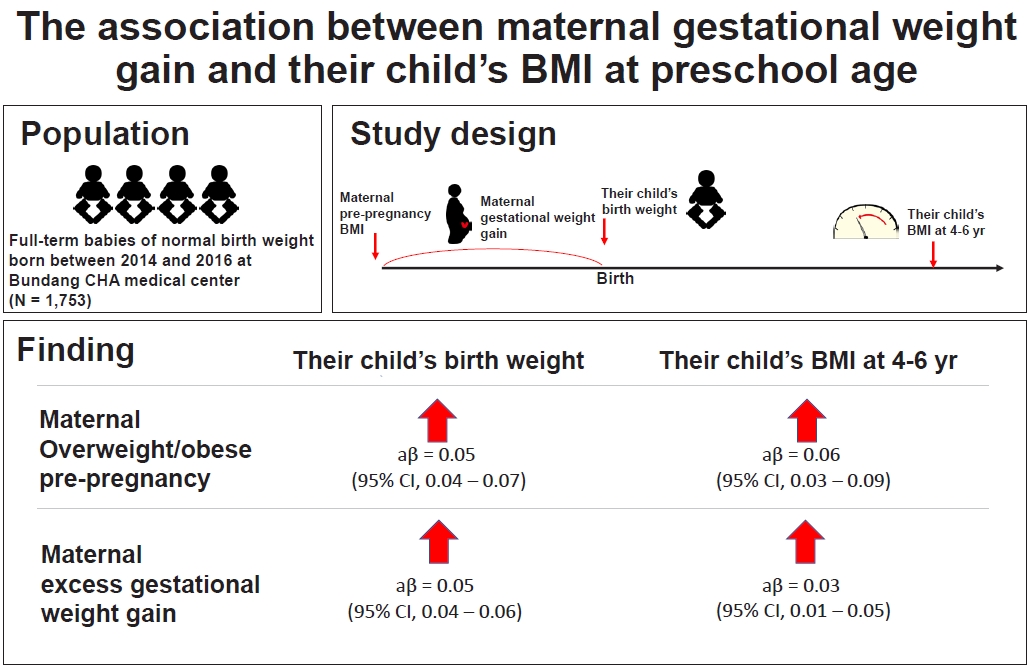
Question: What are the risk factors of newborn birth weight? Does gestational weight gain and prepregnancy body mass index affect childhood weight?
Finding: Excess maternal weight gain increases the risk of overweight/obesity, newborn birth weight, and child body mass index at 4–6 years.
Meaning: Maternal weight control before and during pregnancy should be well controlled.
- Neurobehavior
- Association between previous abortion history and risk of autism spectrum disorders among offspring: a meta-analysis
- Ensiyeh Jenabi, Erfan Ayubi, Saeid Bashirian, Mahdieh Seyedi, Mohammad Rezaei
- Clin Exp Pediatr. 2023;66(2):70-75. Published online August 17, 2022
-

Question: This study aimed to determine whether there is an association between previous abortion history and the risk of autism spectrum disorders (ASDs) among children.
Finding: We found that the risk of ASD associated with previous abortion history had an odds ratio of 1.64 (95% confidence interval, 1.28–2.0; I2=61.7%).
Meaning: These findings suggest a positive and significant association between history of previous abortion and risk of ASD in children.
- Editorial
- Neurology
- Lumbar puncture or not: when does febrile seizure require a neurodiagnostic evaluation?
- Seung Soo Kim
- Clin Exp Pediatr. 2023;66(2):68-69. Published online December 9, 2022
-
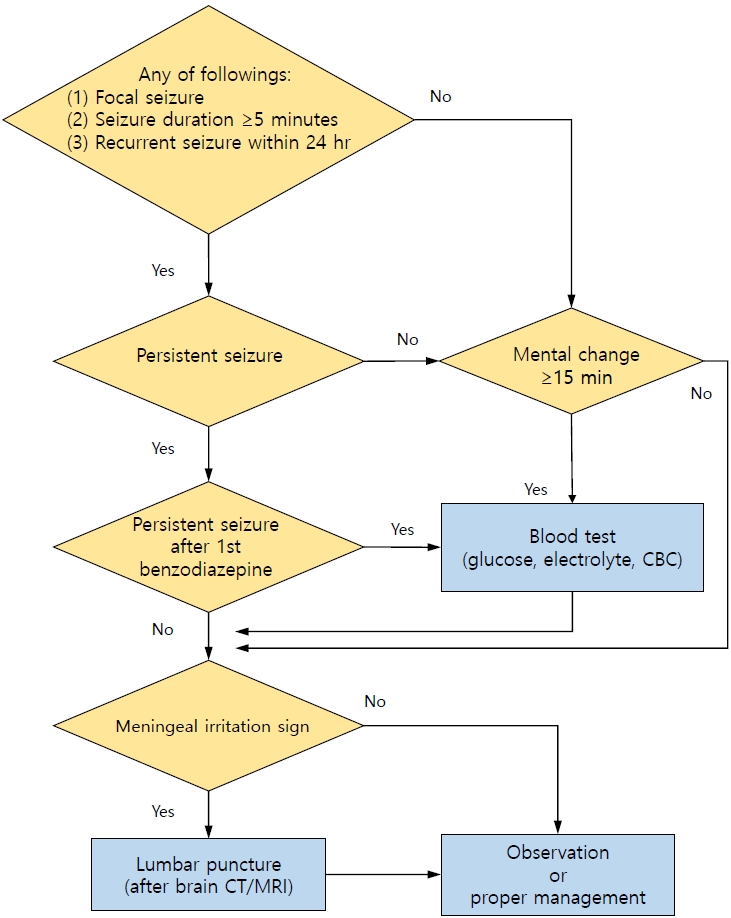
· A neurodiagnostic evaluation (lumbar puncture, blood tests, electroencephalography, and neuroimaging) is not indicated in most patients with simple febrile seizures.
· A lumbar puncture is indicated when a central nervous system infection is suspected in any patient with febrile seizures.
· Blood tests (glucose, electrolytes, and complete blood count) are indicated in patients with persistent seizure after benzodiazepine treatment, prolonged loss of consciousness, poor general condition, or signs of dehydration.
- Emergency Medicine
- Current diagnosis and image-guided reduction for intussusception in children: teamwork approach
- Ji-Hyun Seo
- Clin Exp Pediatr. 2023;66(2):66-67. Published online September 1, 2022
-
· The successful and safe enema reduction of intussusception depends primarily on the experience and preference of the radiologists and the availability of resources.
· The establishment of a standardized manual or protocol for reduction and pre-reduction treatment of intussusception, along with the collaboration of pediatricians, radiologists, and surgeons, is expected to improve the treatment success rate.
- Review Article
- Nutrition
- Total energy expenditure measured by doubly labeled water method in children and adolescents: a systematic review
- Nahyun Kim, Jonghoon Park
- Clin Exp Pediatr. 2023;66(2):54-65. Published online October 17, 2022
-

This systematic review summarizes convincing evidence that total energy expenditure (TEE) measured using the doubly labeled water technique increased with age from 1 to 18 years, while fat-free mass (FFM) increased with growth. TEE and in normal-weight participants, while physical activity level did not differ from that of normal-weight participants.
- Infection
- Pathogenetic and etiologic considerations of febrile seizures
- Ji Yoon Han, Seung Beom Han
- Clin Exp Pediatr. 2023;66(2):46-53. Published online January 13, 2023
-

· Inflammatory responses accompanying fever increase neuronal excitability in the central nervous system, which in turn provokes seizures.
· Fever in children with febrile seizures is usually caused by common respiratory viruses, the distributions of which match those of seasonal community-acquired respiratory tract infections.
· Several genetic variations in ion channels seem associated with neuronal hyperexcitability in children with febrile seizures.
- Original Article
- Neurology
- Long-term neurological cognitive, behavioral, functional, and quality of life outcomes after fetal myelomeningocele closure: a systematic review
- Andre Marolop Pangihutan Siahaan, Martin Susanto, Sarma Nursani Lumbanraja, Dwi Herawati Ritonga
- Clin Exp Pediatr. 2023;66(1):38-45. Published online November 30, 2022
-
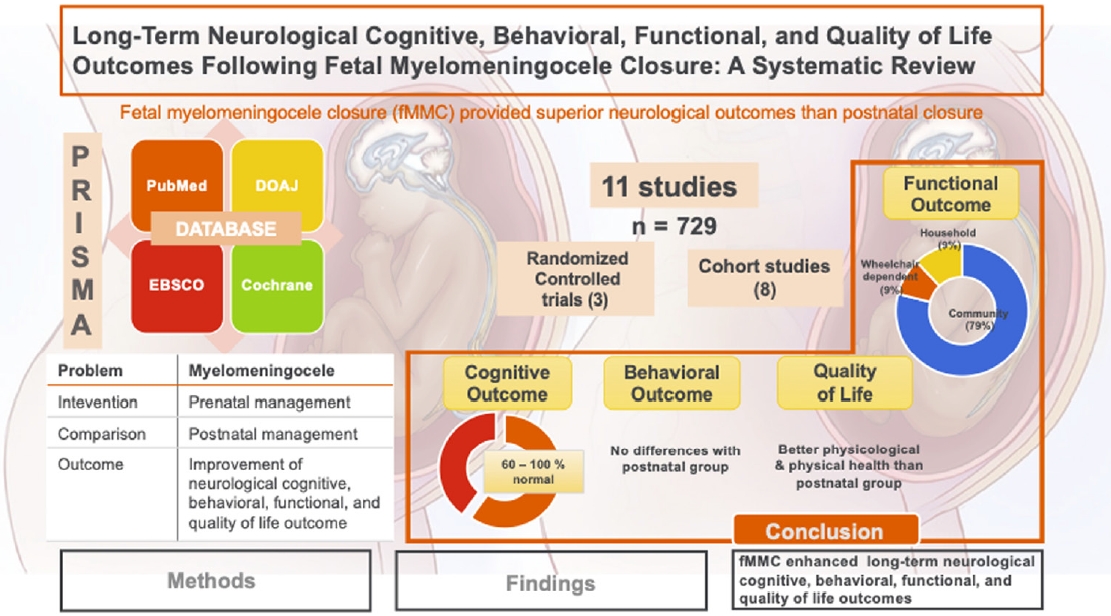
· Fetal myelomeningocele closure significantly improved long-term neurological cognitive, behavioral, functional, and quality of life outcomes, most likely by reducing hydrocephalus rates.
· However, fetal myelomeningocele closure is associated with a significant risk of pregnancy complications, especially premature rupture of membranes and preterm delivery.
-

-
-
8.02023CiteScore94th percentilePowered by
-
Impact Factor3.2
-
- TOPICS
- ARTICLE CATEGORY
- Editorial Office
-
Korean Pediatric Society
#1606 Seocho World Officetel, 19 Seoun-ro, Seocho-ku, Seoul 06732, Korea
Tel: +82-2-3473-7306 Fax: +82-2-3473-7307 E-mail: office@e-cep.org
Clinical and Experimental Pediatrics is an open access journal. All articles are distributed under the terms of the Creative Commons Attribution NonCommercial License (http://creativecommons.org/licenses/by-nc/4.0/)
Copyright © 2025 by Korean Pediatric Society.











